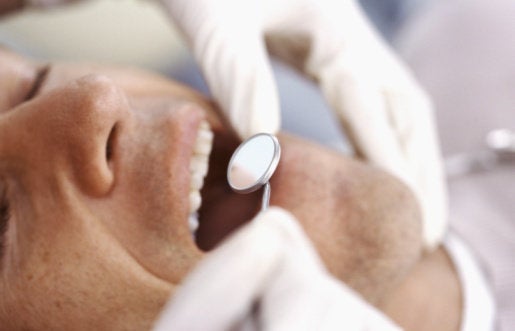

After having dental bonding on her three front teeth, Sally felt as if she was in chronic PMS. This symptom would have been easily dismissed as such, but she was in post-menopause. Aware that the plasticizer in dental bonding can be made of the synthetic estrogen bisphenol A (BPA), she called her dentist to investigate the material used, and sure enough BPA was a main ingredient.
There has been a lot of news coverage about plastics and epoxies containing BPA in recent years, focusing especially on its presence in baby products such as bottles, nipples, and toys. The New York Times columnist Nicholas D. Kristof wrote an informative overview of BPA in Chemicals in Our Food, and Bodies, and the suspected health problems those 92 percent of us share who have been found to have BPA in our urine. Kristof discussed how the lining in food cans contains BPA, among other sources.
In early 2010, the Food and Drug Administration voiced "some concern" about BPA 's safety on the brain, behavior and prostate gland in fetuses, infants and young children. BPA has also been linked to breast and prostate cancer, heart disease, and reproductive and sexual problems.
What does a synthetic estrogen do once it enters the body? Synthetic estrogens are part of a group of chemicals called endocrine disrupters. Basically what happens when you are exposed to an endocrine disruptor is that the body is expecting a natural hormone, such as estrogen, at a receptor site in the body, and takes in the chemical mimic of the hormone and begins to use it as it would the natural thing. Screech. Suddenly the body's hormonal process malfunctions because in fact the "hormone" was a plastic, and couldn't function in the much more complex way that the natural hormone would.
When Sally called her dentist, one of his first questions to her was why hadn't the bonding bothered her as much the last time he used it eight or so years earlier? As synchronicity would have it, within a few weeks of the bonding Sally read about a new study that showed that "women in menopause are more prone to the BPA-associated health effects of inflammation and oxidative stress than either men or women who are still menstruating."
It took seven months of back and forth with Sally's dentist to come up with a solution. During that time, Sally gained 10 pounds and felt out of hormonal balance. A so-called BPA-free alternative bonding material that her dentist ordered arrived only to be revealed in the fine print that the material contained BPA, sealed in with polyurethane. Her dentist was reluctant to use something that could be as bad or worse.
Another alternative they discussed was porcelain, but it is very expensive as a bonding material and if it chips the entire bonding has to be replaced.
Sally and her dentist finally settled upon a simple sealant used to shine and protect teeth from staining. He covered all of the bonding in Sally's mouth with it. As it wears it shows stains, so it will alert her to a breakdown in her protection.
While the press is full of stories about BPA as it relates to baby's bottles and polycarbonate plastic, it appears its astonishing prevalence in dental materials is largely ignored and unknown. Sally's dentist -eager to help--noted that now that he is noticing, BPA is in all regular bonding material and that this issue is not discussed in any of the professional dental journals that he regularly reads.
Menopausal women aside, and as mentioned above, all age groups and sexes may be vulnerable. Surely we need to use The Precautionary Principle and reduce our exposure as much as possible. However, as Mother Nature News Network wrote recently, being BPA-free is easier said than done.